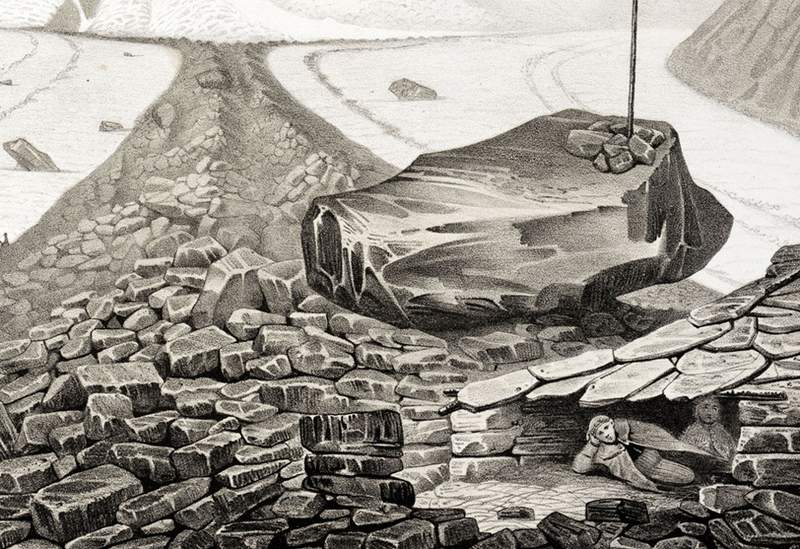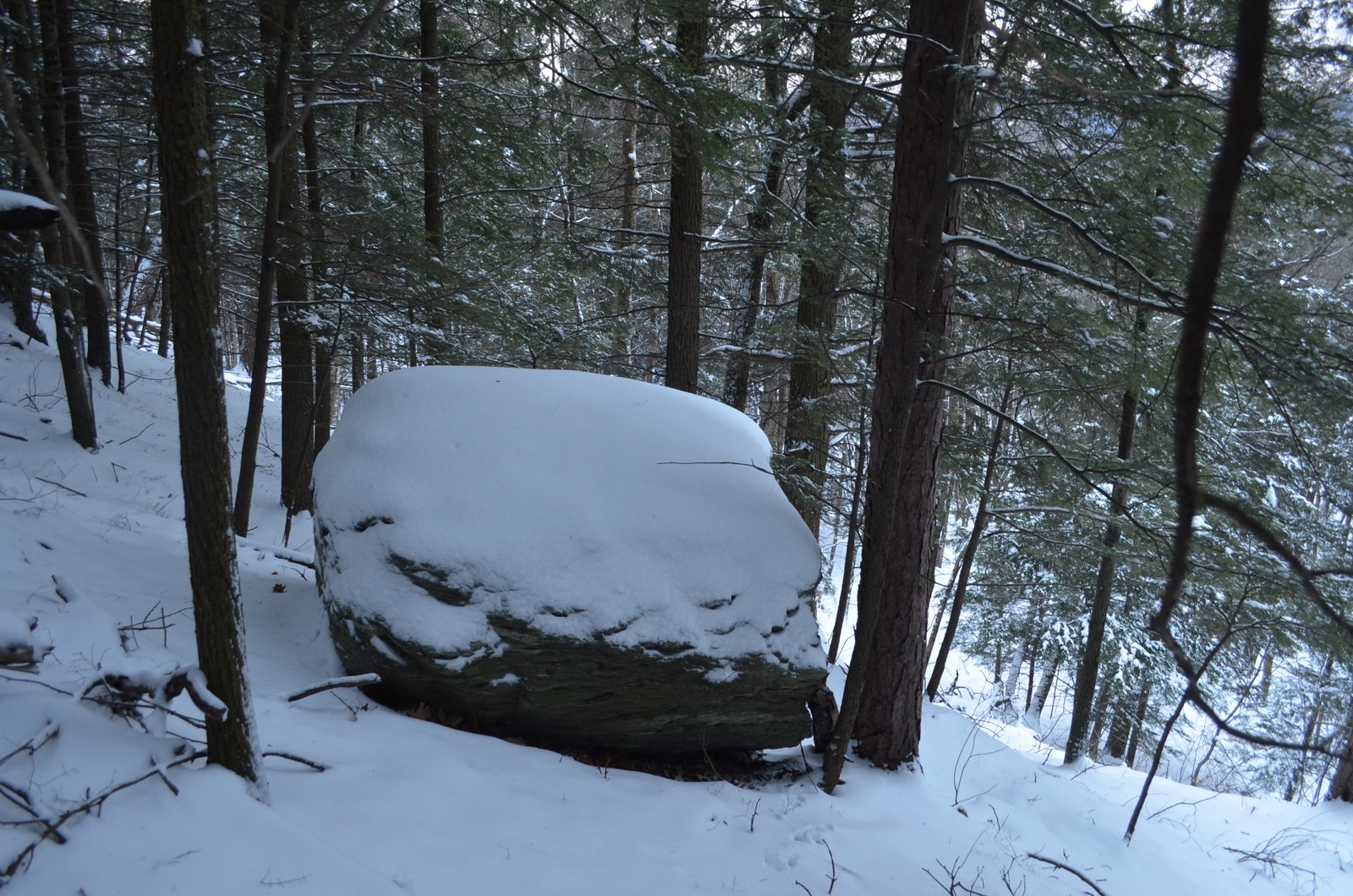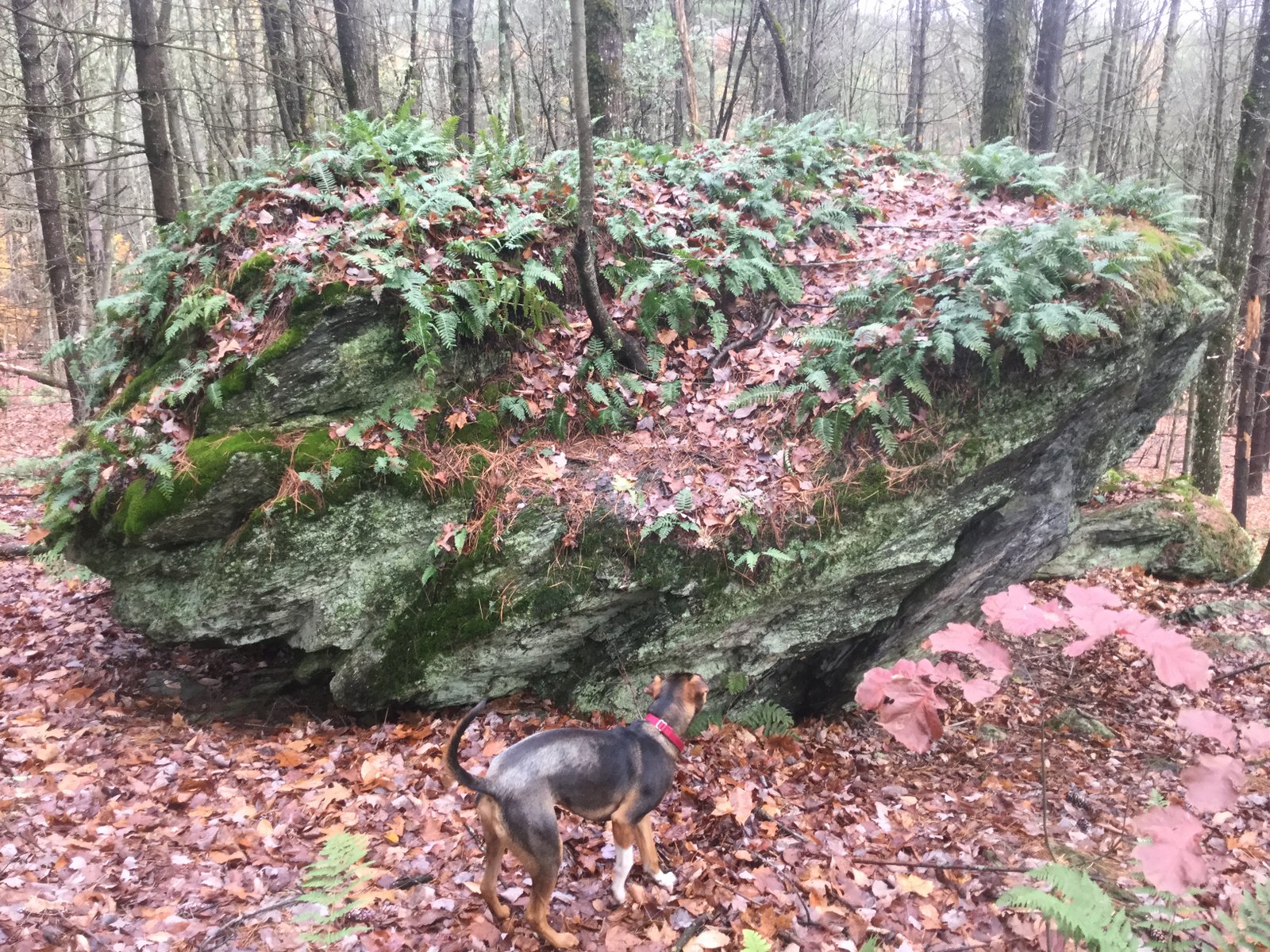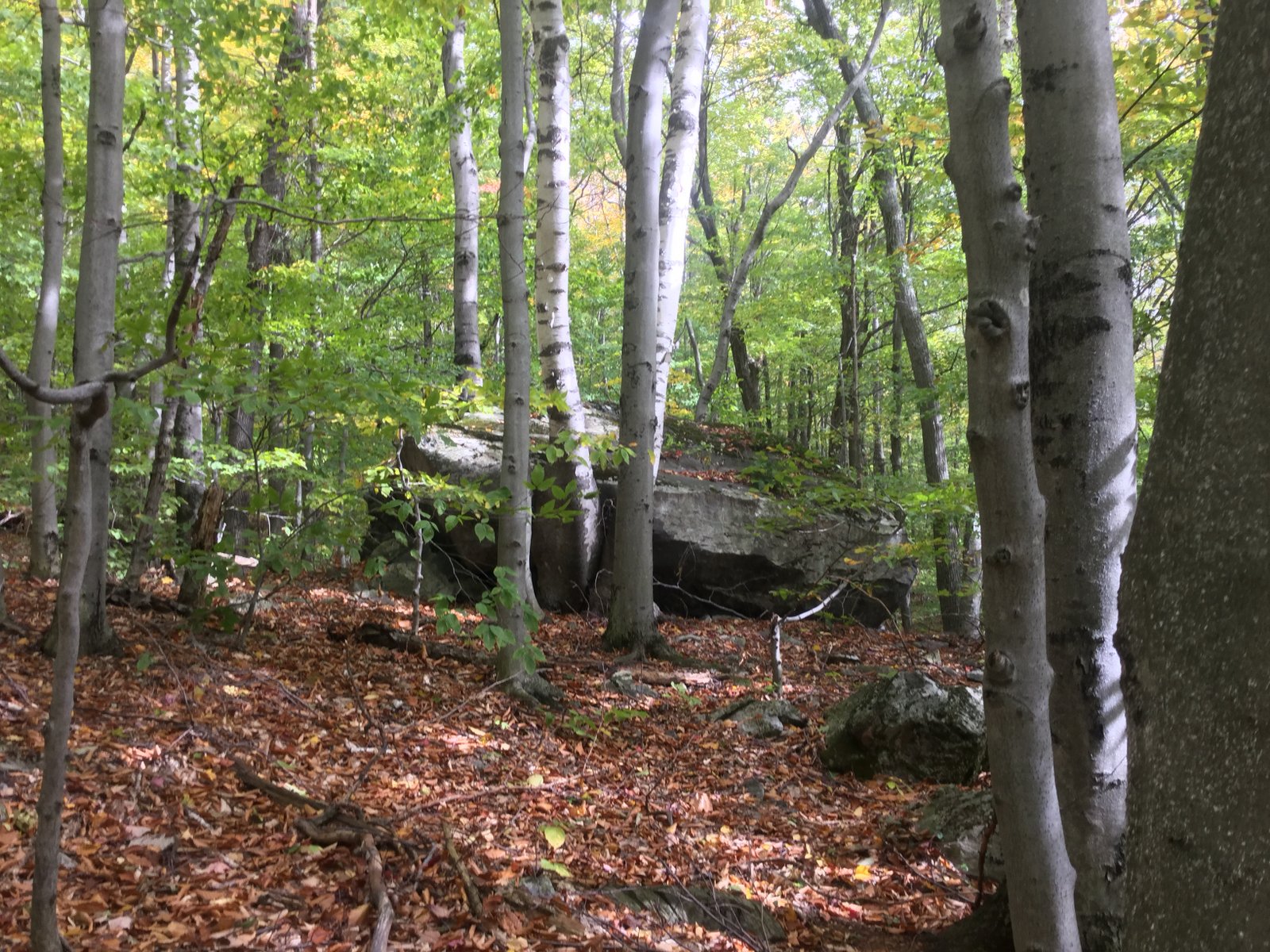Glacial Erratics
“There is now not a scientific society, in which the erratic phenomenon has not been discussed and supported by new facts” (Louis Agassiz, The Glacial Theory and Its Recent Progress, 1842)
Glacial Erratics: What they are (and aren’t)
You’re anywhere in New England, walking through the woods, minding your own business, when you come around a bend in the trail and there it is: a megalithic rock, so wildly out of place, perched impossibly atop the rest of everything. It’s just sitting there, staring at you: “What am I doing here?” it seems to echo out into the forest. Meteors, aliens, sky rocks, ice rafts are the reasons humans have answered with for these rocks.
There are, roughly speaking, two definitions of an erratic. To the modern geologists, an erratic refers to any sized chunk of rock that has been plucked from the bedrock and moved somewhere else by geologic forces (a glacial erratic refers, then, to rocks displaced by glaciers). These rocks vary in size from gargantuan to tiny (e.g. clay particles). Glacial till, as discussed previously, refers to the basal material that is pasted down beneath the glacier, a dense, hard packed layer of innumerable, unsorted (by size) glacial erratics.
A more vernacular definition ignores all those tiny rocks and goes right for the biggies. In his Textbook of Geology (1882), Sir Archibald Geikie calls the largest of these perched, or erratic, blocks, describing them as “large masses of rock, often as big as a house, which have been transported by glacier-ice, and have been lodged in a prominent position in glacier valleys or have been scattered over hills and plains” (p182). Later in the text, Geikie includes a drawing to illustrate the definition; in it a couple of diminutive figures (perhaps glaciologists Charpentier and Schimper?) investigating Pierre A Bot, the prominent glacial erratic in Mont Blanc, Switzerland. The rock was estimated to have been displaced from its parent rock and dragged by glaciers about 60 to 70 miles to its resting place. Prior to a theory of extensive glaciation, Geikie notes, naturalists believed these rocks to have been rafted about in ice when central Europe was covered by a large icy sea (p412).
Plymouth Rock
There are many prominent examples of glacial erratics here in New England. Our most famous glacial erratic is undoubtedly Plymouth Rock. There’s a pretty wild story behind Plymouth Rock. While it’s now about a third of its original size when the Pilgrims landed (they didn’t actually land at Plymouth Rock, but what lame story that makes). They would’ve encountered a rock about 3’x15′ weighing 10 tons. It was broken in half to move it to a different location and then collectors slowly chipped away at it until the late 1800s. The humble rock is now enshrined in a garrish, gated tomb (see gallery below).
Evidence for the Ice Age: A saga
Synthesizing the evidence for glaciers and an extensive Ice Age, Agassiz wrote in The Glacial Theory and Its Recent Progress (1842):
“It is no longer a mere theory, which is the subject of discussion, the object of research is the connection of a whole series of phenomena, apparently very different, but whose relations are evident to all observers: these are the erratic blocks, the mounds of loose materials, the ancient moraines, the polished and striated surfaces, the surfaces moutonnees, the furrowings of rocks in a constant direction, and the whole group of remarkable facts which an illustrious geologist has designated by the characteristic name of the erratic phenomenon.
As Geikie notes, it was not until the 1830s that the significance of glacial erratics became clear. I wanted to write, as is commonly told, that Louis Agassiz was the first to properly listen to the story these erratics were telling, that careful observation and exploration led the Swiss-born American geologist to piece together the mystery of these glacial erratics. While it’s true that Agassiz is responsible for writing down, publishing, and popularizing the theory of a widespread glaciation called the Ice Age, once I started digging into how he came to know I started to see that his work was at best inspired by and at worst (and more likely) stolen from the ideas of his contemporaries (see, for example, Evans, 1887).
Initially, Agassiz was entirely uninterested in glaciers, only traveling the Jura Mountains in search of fossils (the Jura Mountains lend their name to the Jurassic Period). Meanwhile, his contemporaries Karl Friedrich Schimper, Jean Charpentier, and Franz Hugi were exploring and studying the impacts of active glaciers. Schimper, a good friend of Phyllotaxy.com (he was primarily a botanist and studied phyllotaxy), was the first to propose that glaciers had a periodicity, that our climate warmed and cooled in cycles. He and Charpentier, a Swiss-German geologist, noticed the extensive signs of glaciers – like erratics, moraines, and striations – well beyond the current extent of glaciers in Switzerland. Charpentier used this evidence to redraw the extent of what Swiss glaciers had been before their recent retreat (map). Charpentier – and moreso Schimper – communicated many of their findings to Agassiz, who would eventually downplay their role in inspiring, nurturing, and forming his work. After Schimper “discovered the famous glacier marks near Landeron, in the chalk rocks of the Jura, Agassis [sic], to whom he communicated the discovery, now showed the liveliest interest in it, as well as in the general doctrine of great glacial epoch, towards which he had hitherto maintained a decidedly skeptical attitude” (Evans 1887). But Agassiz, on the defensive, wrote in a letter to Alexander Braun “You need not wonder that Schimper’s name is no where mentioned. I wished thus to punish his presumption. Whatever he could call his own, in the remotest degree, I have passed over, even when I was compelled to agree with him.” All our heroes eventually fall, I suppose.
While Agassiz might not have been so honest in presenting his “discovery” of the glacial epoch, his case did rest heavily on glacial erratics, just as these features were fundamental to Schimper in formulating his understanding the extent of previous glaciers. Because erratics differ in composition to the bedrock on which they sit, their origins can easily be traced back to a matching bedrock type, and thus estimate the extent and impact of glaciers. Agassiz did have plenty of field experience and plenty of naturalists and geologists had reported erratics well beyond the margins of the extent of the glaciers in the 1800s throughout Europe and North America. His contribution, if we are to trust his integrity anywhere in his writings, was to describe on a grand scale the enormous extent of the glaciers across the northern hemisphere.
Examples of glacial erratics













